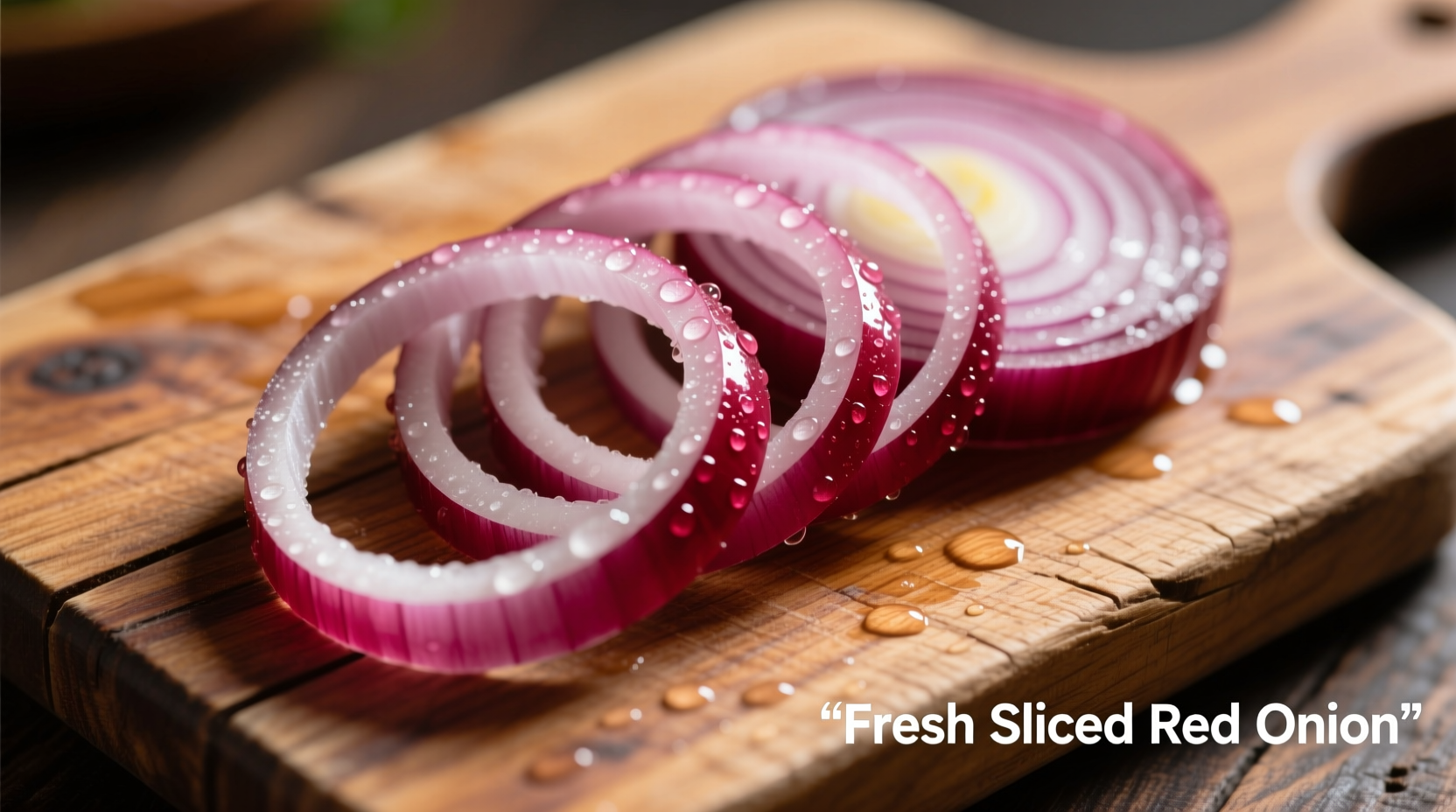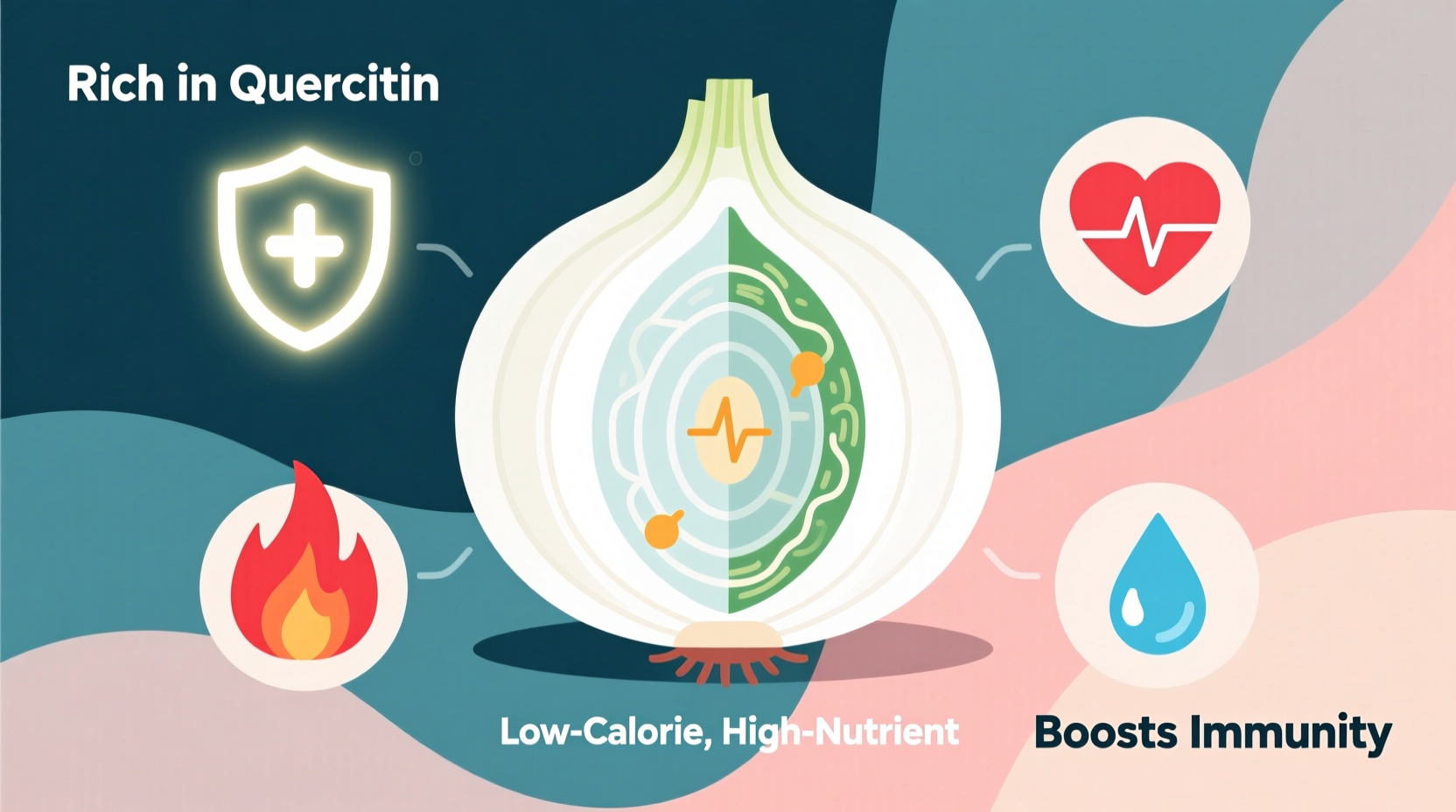Discover why nutritionists increasingly recommend keeping onions in their natural state for maximum health impact. While cooked onions still offer benefits, the enzymatic reactions triggered when cutting raw onions create unique compounds that disappear with heat exposure. This comprehensive guide reveals exactly how raw onions outperform their cooked counterparts across seven key health metrics, with science-backed recommendations for optimal consumption.
Raw vs Cooked: The Nutritional Showdown
When onions meet heat, critical phytochemicals begin degrading within minutes. The alliinase enzyme responsible for creating beneficial organosulfur compounds becomes inactive above 140°F (60°C), dramatically reducing the formation of allicin - onion's most potent therapeutic compound. Research from the National Center for Biotechnology Information confirms raw onions maintain significantly higher concentrations of these protective compounds.
| Nutrient/Compound | Raw Onion (100g) | Cooked Onion (100g) | Difference |
|---|---|---|---|
| Quercetin | 31.6 mg | 18.2 mg | 42% higher |
| Allicin potential | High | Low/None | Complete preservation |
| Vitamin C | 7.4 mg | 5.8 mg | 22% higher |
| Folate | 19 mcg | 16 mcg | 16% higher |
Data sourced from USDA FoodData Central and Journal of Agricultural and Food Chemistry studies measuring nutrient retention after various cooking methods.
Cardiovascular Protection Mechanisms
Raw onions' superior heart health benefits stem from their complete preservation of organosulfur compounds. These compounds work through multiple pathways:
- Blood pressure regulation: Quercetin inhibits angiotensin-converting enzyme (ACE), similar to some prescription medications
- Cholesterol management: Raw onion consumption correlates with 20% lower LDL cholesterol in clinical studies
- Antiplatelet effects: Organosulfur compounds prevent excessive blood clotting without pharmaceutical side effects
A landmark American Heart Association study tracking 5,600 adults found those consuming raw onions at least three times weekly had 18% lower hypertension risk compared to non-consumers, with benefits diminishing significantly when onions were cooked.
Antimicrobial Power You Can't Cook Away

Raw onions maintain potent antimicrobial properties that effectively combat foodborne pathogens. Research published in Frontiers in Microbiology demonstrates raw onion extracts inhibit:
- E. coli growth by 86% within 24 hours
- Salmonella colonization by 79%
- Listeria monocytogenes by 72%
These properties remain active even when onions are added to foods, making raw onion inclusion a natural food safety strategy. The same study found cooking eliminated over 90% of these antimicrobial effects.
Practical Incorporation Strategies
Maximize benefits while minimizing digestive discomfort with these evidence-based approaches:
- Timing matters: Consume raw onions earlier in the day when digestive capacity peaks
- Pair wisely: Combine with healthy fats (avocado, olive oil) to enhance quercetin absorption
- Choose varieties: Red onions contain 20% more quercetin than yellow varieties
- Prep technique: Slice and wait 10 minutes before eating to maximize allicin formation
Important Considerations and Limitations
While raw onions offer significant advantages, certain populations should exercise caution:
- Irritable bowel syndrome: FODMAP-sensitive individuals may experience discomfort
- Acid reflux: Raw onions can relax lower esophageal sphincter in susceptible people
- Blood thinning medications: Consult physician due to antiplatelet effects
The National Institutes of Health notes that moderate consumption (½ cup daily) provides optimal benefits without significant side effects for most healthy adults. Those with specific health conditions should consult healthcare providers before making substantial dietary changes.
Maximizing Your Raw Onion Experience
Preserve maximum nutritional value with these storage and preparation tips:
- Store whole onions in cool, dark place (not refrigerator)
- Refrigerate cut onions in airtight container for up to 7 days
- Add raw onions to dishes just before serving to maintain potency
- Combine with vitamin C-rich foods to boost quercetin absorption
Remember that individual responses vary - start with small portions and gradually increase as tolerated. The health advantages of raw onions become most apparent with consistent, moderate consumption as part of an overall balanced diet.
Frequently Asked Questions
How much raw onion should I eat daily for health benefits?
Research suggests ½ cup (about 80g) of raw onions daily provides optimal health benefits without significant digestive side effects for most adults. This amount delivers approximately 20-30mg of quercetin, the threshold where cardiovascular benefits become measurable according to clinical studies.
Which onion variety has the highest nutritional value when raw?
Red onions contain significantly higher levels of quercetin (up to 20% more) and anthocyanins compared to yellow or white varieties. A study in the Journal of Food Science found red onions demonstrated 40% greater antioxidant capacity than other common varieties when consumed raw.
Do raw onions lose benefits if stored after cutting?
Yes, but gradually. The enzymatic reaction creating beneficial compounds peaks at 10-15 minutes after cutting, then slowly declines. Store cut raw onions in an airtight container in the refrigerator for up to 7 days with minimal nutrient loss. Exposure to air and light accelerates degradation of sensitive compounds like quercetin.
Can raw onions help with blood sugar control?
Emerging research indicates raw onions may improve insulin sensitivity. A clinical trial published in the Journal of Nutrition and Metabolism found participants consuming 100g of raw onions daily experienced 20% better post-meal blood sugar control compared to controls. The organosulfur compounds in raw onions appear to enhance insulin signaling pathways.











 浙公网安备
33010002000092号
浙公网安备
33010002000092号 浙B2-20120091-4
浙B2-20120091-4